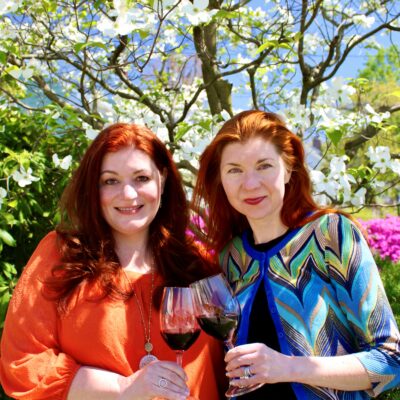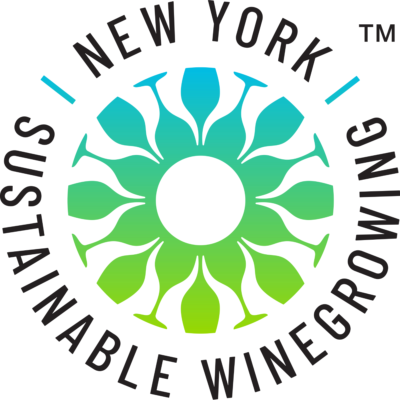 It’s been a long time coming, but New York State wineries now have a way to let consumers know on their wine bottles if the wine is produced using sustainably grown grapes. Wines made with at least 85% of the grapes coming from vineyards certified in 2023 through the New York Sustainable Wine Growing program of the New York Wine & Grape Foundation are the first to add the prestigious New York Sustainable Winegrowing Trustmark on their bottles, letting consumers know the producing winery is committed to environmental and social sustainability.
It’s been a long time coming, but New York State wineries now have a way to let consumers know on their wine bottles if the wine is produced using sustainably grown grapes. Wines made with at least 85% of the grapes coming from vineyards certified in 2023 through the New York Sustainable Wine Growing program of the New York Wine & Grape Foundation are the first to add the prestigious New York Sustainable Winegrowing Trustmark on their bottles, letting consumers know the producing winery is committed to environmental and social sustainability.
Those first bottles to carry the Trustmark will show up in tasting rooms and on wine store shelves very soon, at a time when wine drinkers increasingly care about the environmental impact of what’s in their wine glass.
A report by drinks market analyst IWSR found that 46% of regular wine drinkers in the U.S. will “always choose a sustainable wine when given the choice.” The Trustmark on the bottle lets those environmentally-conscious consumers know they can confidently choose that wine. And the Trustmark on marketing materials—which can be used if 80% or more of a winery’s portfolio contains the Trustmark—lets those consumers know they should keep a winery on their radar.
An Indication of What’s Happening in the Vineyards
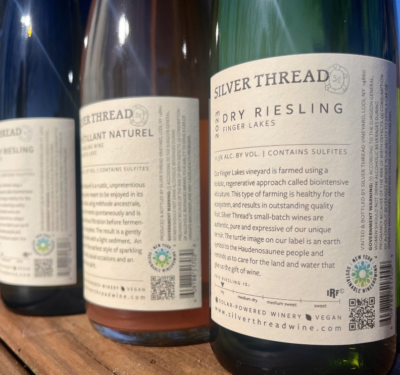 “We have never had a certification that we’ve been able to put on a bottle before,” says Shannon Brock of Silver Thread Winery on Seneca Lake. All Silver Thread’s 2023 wines will carry the Trustmark. All of its vineyards, plus an additional two vineyards the winery sources from, are certified.
“We have never had a certification that we’ve been able to put on a bottle before,” says Shannon Brock of Silver Thread Winery on Seneca Lake. All Silver Thread’s 2023 wines will carry the Trustmark. All of its vineyards, plus an additional two vineyards the winery sources from, are certified.
In total, 49 vineyards throughout the state achieved New York Sustainable Wine Growing certification in its inaugural year. In its second year, the New York Sustainable Wine Growing Program has welcomed 19 new certified vineyards. Wineries using the Trustmark can use either their own certified grapes, buy grapes from other certified vineyards, or use a combination of both.
“We have been very sustainable with our practices in our vineyard and always made a big effort to share that with our customers,” says Brock. Now, the winery’s sustainable story is backed up by the Trustmark, relaying that story not just at the winery, but on store shelves, too.
“I think the Trustmark is going to be very helpful out in the marketplace where we introduce our wines to those who don’t have the benefit of looking out the window and seeing what’s there,” says Brock. She sees the third-party certification as adding legitimacy to what they do. “It shows we’ve actually gone through the steps of proving our vineyard practices to an outside certifier.”
Getting the Word Out
The Trustmark on a bottle will only mean as much as consumers understand it means. The mark itself doesn’t contain detailed information. It’s a symbol encircled by the words “New York Sustainable Wine Growing.” That’s not much to go on for consumers, and that’s where training tasting room staff to talk about what it means comes into play.
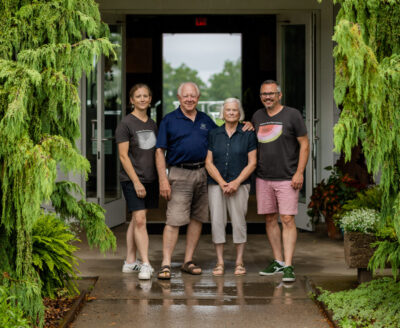 “We’re not a big hornblower company,” says John Martini of Anthony Road Wine Company on Seneca Lake. But, the winery is training its staff to be able to talk about the Trustmark when people inevitably ask about it.
“We’re not a big hornblower company,” says John Martini of Anthony Road Wine Company on Seneca Lake. But, the winery is training its staff to be able to talk about the Trustmark when people inevitably ask about it.
“It’s an evolutionary thing where people start to wonder ‘What’s that thing on the bottle? What does that mean?’” says Martini, who recalls days selling at a market when customers would ask “Are your grapes organic?” The answer to that was “no,” but the winery always used sustainable practices in the vineyard.
Now, he or his staff—who received training about the Trustmark and what it means for the environment—can tell customers what they are doing for the environment, and what they tell them will be backed up by the Trustmark.
There are guidelines for how the Trustmark may be talked about or written about. For instance, a winery can’t claim that the winery itself is certified by New York Sustainable Winegrowing. It can only say that it produces wine with grapes certified through the program. Staff at all wineries that will sell wines with the Trustmark should be trained on the guidelines.
A Yearly Certification
Vineyards achieve certification by going through the VineBalance program and filling out a self-assessment in its workbook. It’s not simply a check-the-box assessment. The program requires vineyard management to develop an action plan based on the results of the self-assessment. The intention is to raise the sustainability bar each year.
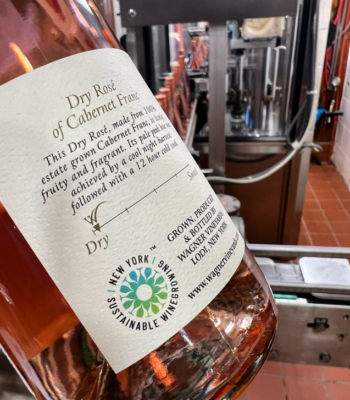 “I was involved in going through the VineBalance workbook,” says John Wagner of Wagner Vineyards Estate Winery in Lodi along Seneca Lake. Along with about a dozen different growers—plus industry professionals from Cornell University and other regions that had gone through similar processes—Wagner was on the committee that created the first standards for the certification.
“I was involved in going through the VineBalance workbook,” says John Wagner of Wagner Vineyards Estate Winery in Lodi along Seneca Lake. Along with about a dozen different growers—plus industry professionals from Cornell University and other regions that had gone through similar processes—Wagner was on the committee that created the first standards for the certification.
“It’s a relief to finally have something in place that can quantify what we’re doing,” says Wagner.
However, he emphasizes that this is not a program you do once and you’re good for the next 30 years. Seeing a Trustmark on a winery’s bottles year after year will really mean something.
“The program has follow-through,” he says. “This is an every-year certification.” Wagner just finished going through the VineBalance self-assessment for 2024 and upgrading his answers for recertification for the 2024 vintage.
“If there is a question we don’t score all the potential points on, there are plans of action for improvement,” says Wagner.
Any Winery Can Use the Trustmark
Billsboro Winery in Geneva does not have its own vineyards, but it can still put the Trustmark on some of its 2023 wines.
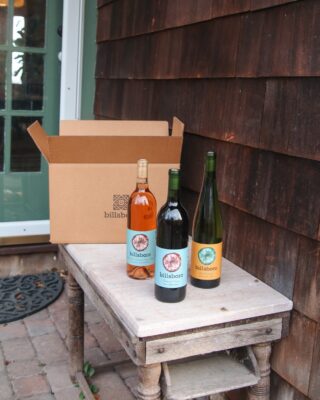 “We buy grapes from half a dozen local Finger Lakes growers and most of them are part of the program,” says Billsboro’s Vinny Aliperti. Because the winery buys from vineyards that have achieved the New York Sustainable Wine Growing certification, as long as Aliperti fills out the paperwork and gets approval, the Trustmark can go on the winery’s qualifying bottles.
“We buy grapes from half a dozen local Finger Lakes growers and most of them are part of the program,” says Billsboro’s Vinny Aliperti. Because the winery buys from vineyards that have achieved the New York Sustainable Wine Growing certification, as long as Aliperti fills out the paperwork and gets approval, the Trustmark can go on the winery’s qualifying bottles.
“The process was easy,” says Aliperti. “It was just a couple of forms.”
He thinks there is a slice of the winery’s visitors who are keen on seeing something like the Trustmark on the bottle, and that slice is the oh-so-sought-after younger generation.
“I think the younger consumers are more curious about practices and would be more interested in wines with the Trustmark,” Aliperti says. He believes most consumers, despite which generation they’re in, look for transparency and integrity, and the Trustmark provides evidence of that.
He also thinks once the effects of the Trustmark are seen, there will be a serious case of FOMO for those not yet in the program.
“I think there will be more buy-in,” says Aliperti.

